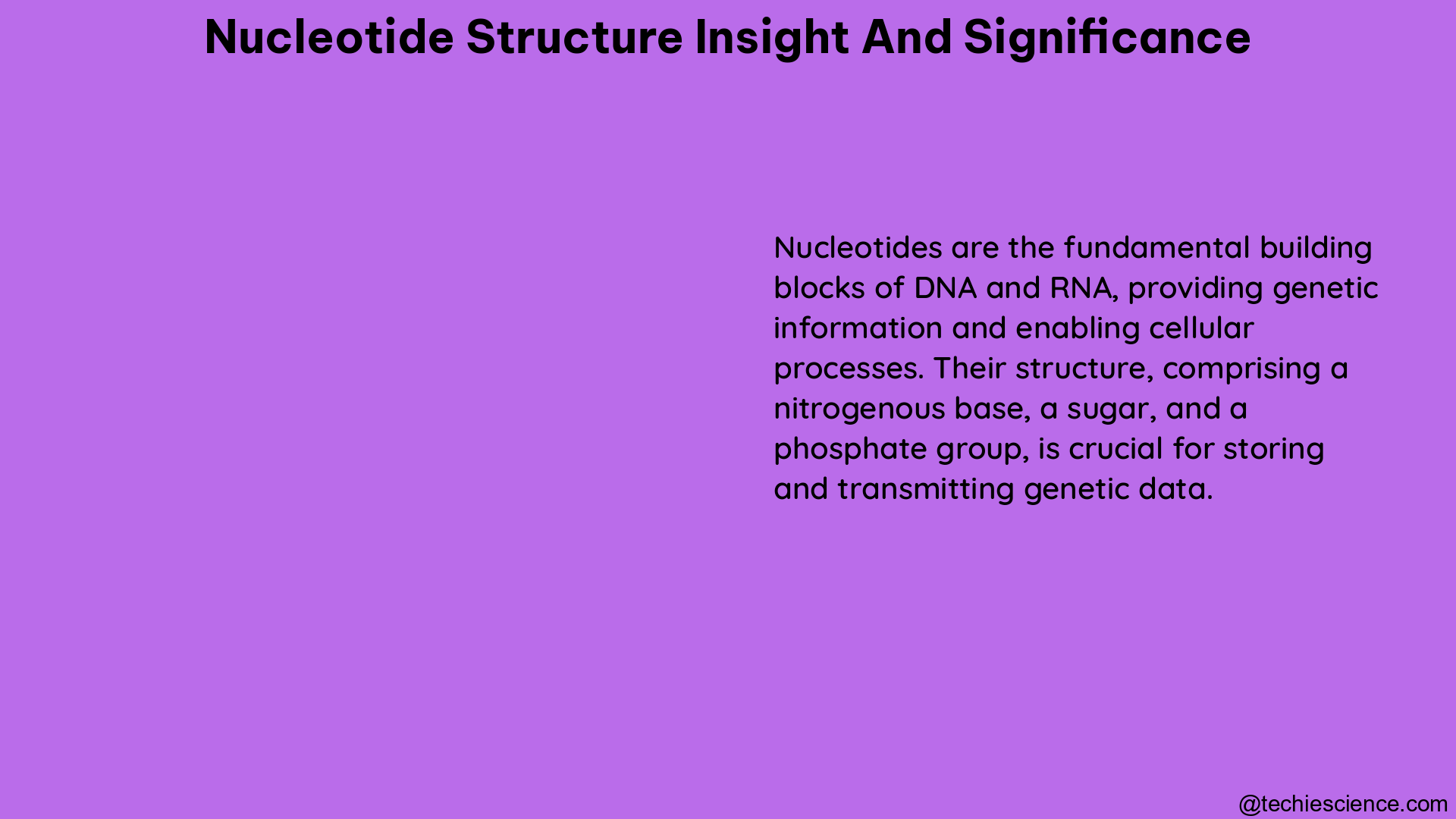Nucleotides are the fundamental building blocks of nucleic acids, such as DNA and RNA, and play a crucial role in various biological processes, including DNA replication, transcription, and translation. Understanding the structure and significance of nucleotides is essential for advancing our knowledge of biological systems and developing novel therapeutic and diagnostic applications.
Cap Structure Variations
Cap structures are essential for the stability and translational efficiency of mRNAs. The cap structure variations significantly influence the quality of in vitro transcribed (IVT) mRNAs and overall protein expression in different mammalian cell lines.
- Trinucleotide Cap Analogs: Researchers have synthesized and investigated trinucleotide cap analogs, such as m7GpppNpG, for their affinity for translation initiation factor 4E (eIF4E). These cap analogs have been found to have similar affinity for eIF4E as the natural cap 0 and cap 1 structures.
- Cap 0 vs. Cap 1 Structures: The cap 0 structure (m7GpppN) and the cap 1 structure (m7GpppNm) differ in the presence of a 2′-O-methylation on the first transcribed nucleotide. This subtle structural difference can have a significant impact on mRNA stability, translation efficiency, and immune system recognition.
- Cell Line-Specific Effects: The effect of cap structure variations on mRNA expression is highly dependent on the cell line. For example, JAWS II dendritic cells have been found to be the most sensitive to structural changes within the mRNA 5′ end.
- mRNA Purity: The purity of the mRNA is a crucial factor influencing its expression in all investigated cells. Impurities can activate nucleic acid recognition pathways, leading to reduced mRNA expression.
Nucleobase Identity and Methylation Status

The identity and methylation status of the first transcribed nucleotide can significantly affect mRNA expression in mammalian cell lines.
- Nucleobase Identity: The identity of the first transcribed nucleotide (adenine, guanine, cytosine, or uracil) can have a profound impact on mRNA expression levels. Certain nucleobases may be preferred or disfavored by the cellular machinery, leading to differential mRNA expression.
- Methylation Status: The methylation status of the first transcribed nucleotide can also influence mRNA expression. For example, the presence or absence of a methyl group on the 2′-O position of the ribose sugar can affect mRNA stability, translation efficiency, and immune system recognition.
- Cell Line-Specific Sensitivity: The sensitivity of cells to structural changes within the mRNA 5′ end, including nucleobase identity and methylation status, can vary significantly between different cell lines. JAWS II dendritic cells have been found to be the most sensitive to these structural changes.
Base Stacking Energies
Base stacking energies are crucial for the stability and function of nucleic acids, as they contribute to the overall stability of the double-helix structure.
- Comprehensive Data on Base Stacking: Recent studies have provided direct and comprehensive data on base stacking in nucleic acids, quantifying base stacking energies with an uncertainty of ~0.1 kcal/mol. This detailed knowledge can provide new insights into biological processes and improve the accuracy of molecular modeling.
- Implications for Biological Processes: The base stacking energies can influence various biological processes, such as DNA replication, transcription, and translation. Understanding these energies can help researchers better understand the underlying mechanisms and dynamics of these processes.
- Applications in Biotechnology: The data on base stacking energies can also inform DNA design in biotechnology, allowing for the development of more stable and efficient DNA-based systems, such as biosensors, gene circuits, and DNA-based nanomaterials.
Biological Specification of Nucleotide Structure Insight and Significance
The nucleotide structure insight and significance have profound implications for various biological systems and processes.
Telomerase Activity and Processivity
- Telomerase Function: Telomerases are moderately processive reverse transcriptases that use an integral RNA template to extend the 3′ end of linear chromosomes, maintaining the integrity of the genome.
- Processivity Values: The processivity values of telomerases, defined as the probability of extension rather than dissociation, range from about 0.7 to 0.99 at each step. This means that, on average, tens to hundreds of nucleotides are incorporated before the single-stranded DNA product dissociates.
- Implications for Cellular Aging and Cancer: The processivity and activity of telomerases are crucial for cellular aging and the development of cancer. Understanding the nucleotide structure and its impact on telomerase function can provide insights into these important biological processes.
Nucleotide Structure and Biological Processes
- DNA Replication: The structure and properties of nucleotides, such as base stacking energies and hydrogen bonding patterns, play a crucial role in the fidelity and efficiency of DNA replication.
- Transcription and Translation: Nucleotide structure, including cap structures and methylation patterns, can significantly influence the stability, processing, and translation of mRNA molecules, ultimately affecting gene expression and protein synthesis.
- Immune System Recognition: Certain structural features of nucleotides, such as the presence or absence of methylation, can be recognized by the immune system, triggering various responses that may impact biological processes.
In summary, the nucleotide structure insight and significance have far-reaching implications for our understanding of biological systems and the development of novel therapeutic and diagnostic applications. By delving deeper into the cap structure variations, nucleobase identity, methylation status, and base stacking energies, researchers can uncover new insights that can advance the fields of molecular biology, genetics, and biotechnology.
References:
– Nucleotide Cap Structures: From Biotechnology to Structural Biology
– The Impact of mRNA Cap Structure and 5′ Untranslated Region Composition on Protein Expression in Mammalian Cells
– Comprehensive and accurate quantification of base stacking in nucleic acids

I am Abdullah Arsalan , Completed my PhD in Biotechnology. I have 7 years of research experience. I have published 6 papers so far in the journals of international repute with an average impact factor of 4.5 and few more are in consideration. I have presented research papers in various national and international conferences. My subject area of interest is biotechnology and biochemistry with special emphasis on Protein chemistry, enzymology, immunology, biophysical techniques and molecular biology.